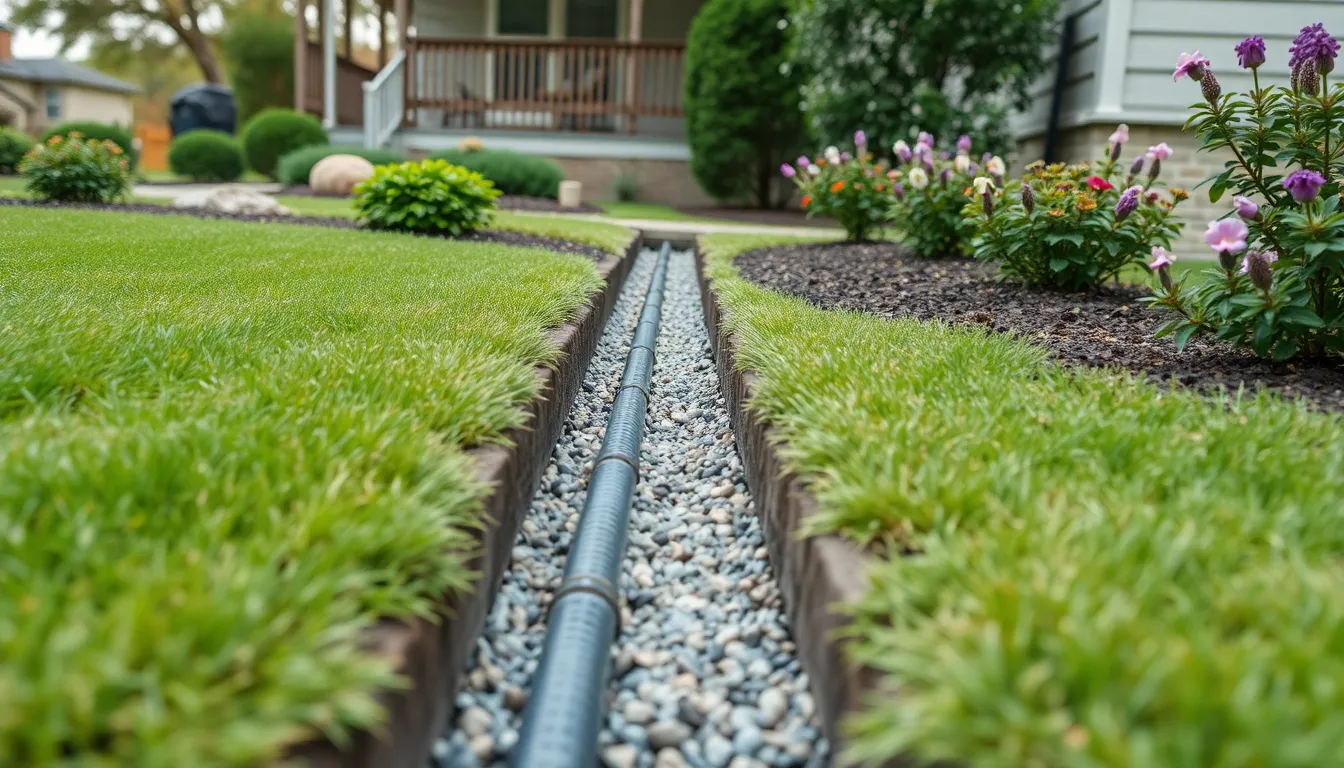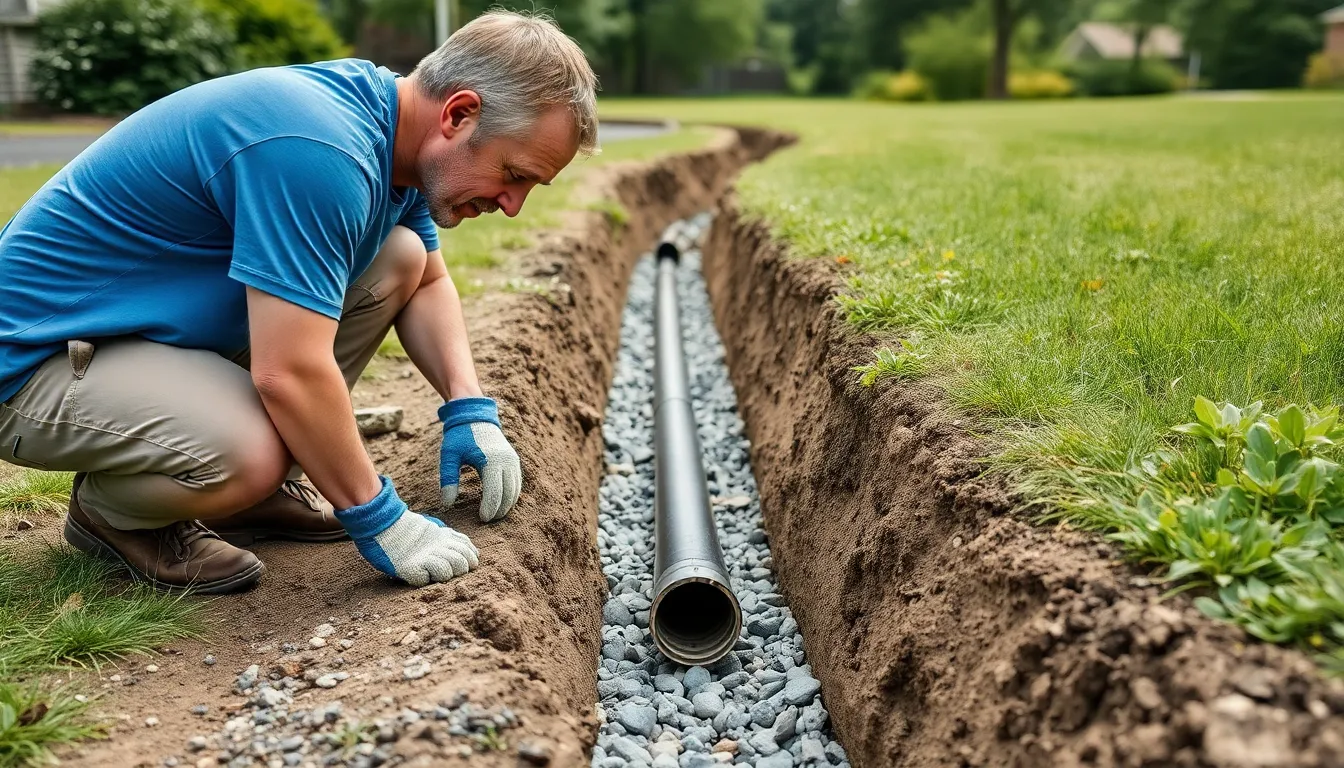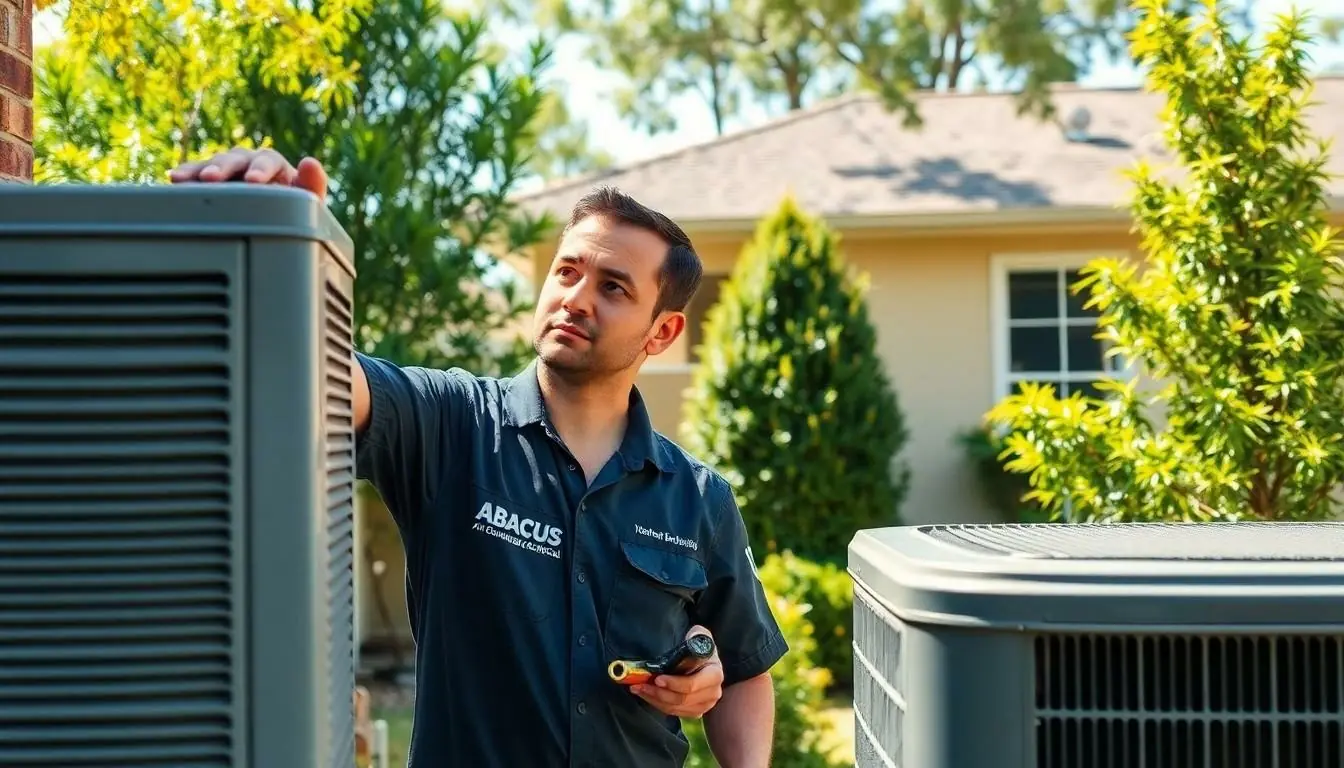Table of Contents
ToggleWhen water starts pooling around the foundation like it’s auditioning for a role in a disaster movie, it’s time to consider a French drain. This unsung hero of home drainage systems can save basements from becoming indoor swimming pools. It’s not just about keeping things dry; it’s about protecting your biggest investment and maintaining your home’s value.
Overview of French Drain Installation
French drain installation serves as an effective method for managing water accumulation around a foundation. This system utilizes a trench filled with gravel and a perforated pipe that directs water away from vulnerable areas. First, the installation site requires proper assessment to identify water flow patterns and potential problem spots.
Next, digging the trench becomes essential. The trench should slope away from the foundation, typically maintaining a 1% slope over its length. Homeowners may choose a depth of 18 to 24 inches, ensuring adequate water capture. Gravel then goes into the trench, acting as a filtration system.
Additionally, a perforated pipe sits at the bottom of the trench, allowing groundwater to enter while keeping dirt and debris out. The pipe should align with a drainage outlet to direct water safely away. Covering the pipe with more gravel prevents sediment from clogging the system and promotes efficient water movement.
Furthermore, determining discharge points is crucial. These points should release water at least 10 feet away from the foundation. Selecting appropriate materials, such as PVC or corrugated pipe, ensures longevity and functionality.
Finally, landscaping around the French drain might enhance aesthetics and prevent water pooling. Utilizing plants or grass over the system provides natural filtration and supports soil stability. Regular maintenance checks confirm the system operates effectively, reducing the risk of flooding or water damage.
Benefits of French Drains

French drains offer numerous benefits for homeowners dealing with water accumulation. These systems effectively redirect water, providing essential support for maintaining a dry and protected living environment.
Improved Drainage
Improved drainage stands out as a key advantage of French drains. These systems efficiently channel excess water away from the foundation, reducing the risk of water pooling. Homeowners experience fewer instances of flooding thanks to the trench filled with gravel and perforated pipes. Consistent water management promotes healthier landscaping and prevents erosion in surrounding areas. When installed correctly, French drains function effectively, ensuring that water flows away from critical spaces.
Protection Against Water Damage
Protection against water damage is another significant benefit. By directing water away from the home’s foundation, French drains help maintain structural integrity. This proactive measure lessens the likelihood of mold growth and costly repairs. Homeowners value this system, as it safeguards their investment in the property. Moreover, minimizing water exposure contributes to better indoor air quality. With reduced humidity levels, families enjoy a healthier living environment free from potential health hazards associated with excessive moisture.
Steps for French Drain Installation
Follow these steps to ensure a successful French drain installation. Each phase plays a crucial role in effective drainage.
Planning and Design
Begin by assessing the drainage needs of the property. Identify areas where water pools or where the soil retains moisture. Plan the drain’s layout, ensuring it slopes away from the foundation for optimal flow. A typical slope recommendation is 1% per foot of length. Determine the distance of the discharge point from the foundation, aiming for at least 10 feet to prevent water accumulation at the base. Consider local weather conditions and soil types as they influence water flow and drainage effectiveness.
Excavation and Trenching
Next, proceed with excavating the trench. Dig a trench approximately 18 to 24 inches deep, following the planned layout. The width should accommodate a gravel layer, allowing for sufficient drainage. Ensure the bottom of the trench follows the desired slope for drainage efficiency. Remove any rocks, roots, or debris from the trench to facilitate easy pipe placement. Check the trench alignment and slope frequently to maintain consistency with the plan.
Installation of Drainage Pipe
After excavating the trench, place the perforated drainage pipe. Position the pipe at the bottom of the trench with the holes facing downward for maximum water intake. Add a layer of gravel over the pipe, which serves to filter out sediment and protect the pipe from clogs. Use PVC or corrugated pipe for durability and effectiveness. Ensure the pipe connects to the intended drainage outlet, directing water away from vulnerable areas.
Backfilling and Grading
Finally, backfill the trench to complete the installation process. Cover the gravel with soil, ensuring not to compact it excessively. Maintain the slope towards the drainage outlet to facilitate effective water flow. Grade the surrounding area to enhance the aesthetic appeal and reduce potential water pooling. Regularly check the installed system to confirm its functionality and address any issues that may arise.
Common Mistakes to Avoid
Choosing the wrong location for a French drain can undermine its effectiveness. Placing it too close to the foundation often causes water to pool rather than flow away. Homeowners often overlook proper slope during installation, which should ideally be 1% per foot. Neglecting this can lead to inadequate drainage and increased flooding risks.
Using inappropriate materials for the drainage pipe also poses significant issues. PVC or corrugated pipe ensures durability and reliability, while lower-quality materials can deteriorate quickly. Failing to include a proper gravel layer can lead to clogs, so maintaining a sufficient gravel bed is essential.
Not considering local soil types may hinder performance. Rocky or clay-heavy soils can affect drainage patterns, necessitating adjustments in the installation plan. Homeowners frequently forget to monitor discharge points, which should direct water away at least 10 feet from the house to prevent saturation around the foundation.
Overlooking maintenance leads to long-term issues. Regularly checking the system for blockages ensures optimal performance and minimizes the likelihood of flooding. Lastly, ignoring local regulations can result in fines or required modifications. Familiarizing oneself with zoning laws helps ensure compliance and optimal installation.
Installing a French drain is a smart investment for any homeowner concerned about water accumulation around their foundation. This effective drainage solution not only protects the home from flooding but also preserves its value over time.
By following the proper installation steps and avoiding common pitfalls, homeowners can ensure their French drain functions optimally. Regular maintenance checks will keep the system in top shape, safeguarding against potential water damage and enhancing overall property health.
With a well-installed French drain, homeowners can enjoy peace of mind knowing their living environment is dry and secure.







